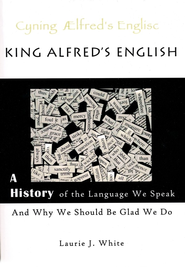Your child has just handed you a completed essay, and you are ecstatic . . . until you realize you now have to grade it. Where do you begin? How do you evaluate this marvelous gift?
Grading Essays
Welcome to this exciting, first-in-a-series blog about grading your middle and high school students’ essays! You can find the whole video by clicking here.
Learn to ask six key questions of the paragraphs in the body of your students’ essays in this part-one tutorial. I’ll walk you through these questions from the obvious to the not-so-obvious. Keep reading to view the outline and quoted paragraphs from the tutorial.
What you’ll want to know:
- This first video addresses only the paragraphs in the body of the essay.
- You can use this information whether you give grades or simply evaluate your students’ work.
- Consider grading only the paragraphs in the body of the next essay you assign. Tell your students ahead of time that you are going to do this, and they’ll focus on those paragraphs.
- Consider assigning only the paragraphs in the body of the essay to give your student practice in those. There’s no need to write every part of every essay in every assignment! Really!
Six Key Questions
Now, onto the six key questions to ask the paragraphs in the body of the essay:
1. Are there paragraphs?
Believe it or not, some kids miss this elementary fact. Their essays shouldn’t look like a tree trunk. They should look like a set of dresser drawers: a separate drawer for each paragraph.
2. Does each paragraph have a topic sentence?
In this video, I talk about three kinds of topic sentences: direct, interrogative, and climactic.
3. Does each paragraph support, prove, illustrate, or explain its topic sentence?
If one of the sentences in a paragraph fails to support the topic sentence, it doesn’t belong there.
For a middle school tutorial on how to create paragraphs, click here. >>
For a high school tutorial on how to create paragraphs, click here. >>
4. Do all the paragraphs address the essay’s topic?
You’ll notice I wrote “topic,” not “main idea” or “thesis statement.” For now, determine if each paragraph stays on the essay’s topic. If not, it shouldn’t be there.
Find a tutorial on developing main ideas or thesis statements here. >>
5. Does each paragraph stay on topic?
Just as a whole essay can go off topic, so can the lowly paragraph. When the paragraph stays on topic, it displays unity. Here’s an example of a paragraph that does not display unity, taken from The Power in Your Hands: Writing Nonfiction in High School:
(1) Babysitters should have first-aid training. (2) This training can be anything from how to choose age-appropriate toys to performing CPR. (3) CPR stands for cardiopulmonary resuscitation and can be performed by one person or by a team in which one person works for a while on the victim and then a second person takes over. (4) CPR used to be performed by alternating phases of pushing on the chest and breathing in the victim’s mouth, but the American Heart Association has developed a method that includes calling 9-1-1 first and then pushing on the center of the victim’s chest.
Can you tell which sentence begins to go off topic?
6. Is each paragraph complete?
In other words, does the paragraph cover the topic well, or does it give the topic a shallow treatment? Here’s an example of a shallow treatment of the topic of kudzu, taken from—you guessed it—The Power in Your Hands: Writing Nonfiction in High School:
Kudzu is another botanical pest. Originally from China and Japan, the vine flourishes here despite temperature or precipitation variations, growing almost as well in drought as in rain-forest conditions. It envelops anything it grows on and can cover whole houses if left unchecked.
Here’s a more complete treatment of the topic of kudzu’s invasiveness. The darker font picks up where the shallow paragraph left off:
Kudzu is another botanical pest. Originally from China and Japan, the vine flourishes here despite temperature or precipitation variations, growing almost as well in drought as in rain-forest conditions. Because it is so vigorous, it envelops anything it grows on and can cover whole houses if left unchecked. While the luxurious growth might create fantastical shapes and seem like a lovely green blanket on the landscape, this softening effect that hides rusting tractors and slows erosion has a dark side—literally. The climbing vines cover nearby foliage and block the sunshine. Healthy, useful plants then fall prey to kudzu’s invasiveness. Given a few years, kudzu can even kill bushes and whole trees. Because the vines are not native to our area, they have no natural predators in place. Therefore, they continue to advance uncontrolled over the countryside.
That’s it. Those are the first six key questions in this series Grading Essays Made Easy.
For a free grading grid for middle school essays, click here. >>
For a free grading grid for high school essays, click here. >>
Don’t miss out on this important information I added at the end of the video:
- Zero in on the content, not the mechanics, of the paragraphs. Though grammar is important, we want our students to be effective communicators. Content is king!
- When grading or evaluating essays, don’t grade everything! Choose two things your student did well and then choose one thing your student can improve upon. We’re aiming for improvement, not perfection.
Yours for a more vibrant writing class,

.











